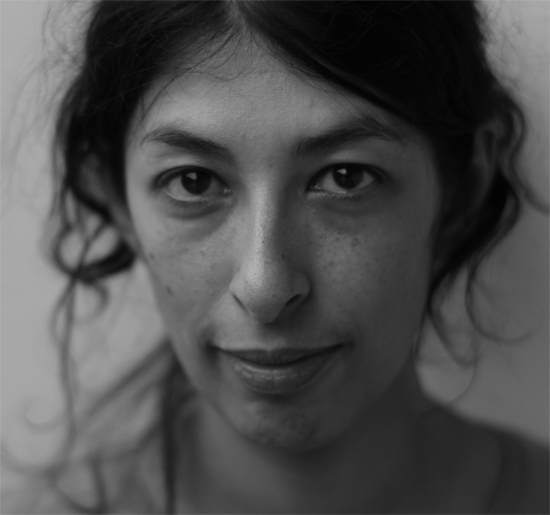After a night out in London, Genie Lallan wakes up in hospital to find that her brother, Paul, the person who gave her the drugs which brought on her collapse, has disappeared. It’s not the first time Paul has gone missing: when he was sixteen he ran away to Mauritius, the island where he and Genie spent the first years of their lives. Now, as Genie combs the streets of London looking for him, visiting his old friends and old haunts, it becomes clear to her that it is to Mauritius he has returned once more, in search of a sense of belonging he has never felt in England.
Genie And Paul, Natasha Soobramanien’s beautiful, lovingly written first novel, tells the story of a sister’s love for her brother, of how far it carries her in her quest to find him, and finally of its limits. At the same time, it is a portrait of a young man’s struggle to discover an identity, and of his yearning for a remembered childhood place which may or may not exist in reality. Told in short, fragmentary episodes, the novel skilfully hops between the decades of the two central characters’ lives, spinning an interconnected web of the moments which define them as people. We see their flight from Mauritius to the UK as children, Genie’s introduction of Paul to her school friend, Eloise, who will become his great love, Paul’s first experiences of the drugs which later precipitate his life’s unwinding, and his memories of what life was like in Mauritius before he and Genie came to London. Soobramanien’s softly cadenced prose is perfectly styled to articulate the language of memory, of childish impressions carried over into adulthood, of innocence lost. For instance, Genie and Paul’s mother gives an almost unbearably poignant account of the last time she tried to meet Paul’s father:
"I went to the beach as usual and I sat all day looking out to sea as though waiting for a ship to appear over the horizon. He never showed up and I was left alone there, watching those waves which I had never before thought of as empty."
Soobramanien takes as a loose model for her story Bernadin de Saint-Pierre’s 18th Century French novel about Mauritius, Paul Et Virginie, after whose principal characters Genie and Paul are named. Saint-Pierre’s novel haunts the plot of Soobramanien’s, cropping up at various moments in the story, at one point being summarised in full by Genie. The parallels between the two stories are clear and yet sophisticatedly oblique, Genie And Paul presenting itself as an update of Paul Et Virginie, and an update on the relationship between Mauritius and the West. A man whom Paul meets on a beach in Mauritius tells him:
"It is odd when you read Saint-Pierre’s journals. He found Mauritius inhospitably rugged and yearned for the pastoral beauty of France. And yet Paul Et Virginie is his hymn to this island, which he presents as a paradise, while he savages his homeland. A man between two worlds…"
Saint-Pierre’s apparently confused feelings towards Mauritius are a complex reflection of Paul’s own. In Paul’s mind Mauritius is a kind of Eden, the one place where he feels at home, but when he returns he feels unwelcome: "I don’t know why you’ve come back," his friend Gaetan tells him. "What is there here for you? I think you should go."
Paul’s sense of dislocation encompasses time as well as place. A grown man, he tries to revisit the land of his childhood but finds it changed and forbidden to him. The years which separate him from it have been spent squatting and partying in London, never beginning a permanent life anywhere else. An early chapter in Genie And Paul is entitled ‘Lost Time’, referring to the missing hours Genie can’t remember from the night she collapsed, but these words could just as easily apply to Paul’s predicament. In fact, Soobramanien’s greatest achievement with Genie And Paul may lie in its expression of the lost time between childhood and adulthood. The novel feels sparse, almost unaccountably sad, the space in between the lines of narrative being a silent, eloquent representation of the lost hours of youth.
An extract from Genie And Paul
Prologue
On the afternoon of Saturday 3rd May 2003, twelve-year-old Jeannot Gaspard set out from home on his bike to visit a new friend. He did not tell his mother where he was going. Jeannot’s friend lived in a shack at the end of a spit of land on the west coast of Rodrigues – the wilder side of the island – a few kilometres away from the village of La Ferme, where Jeannot lived. The journey took longer than it might have done: the destruction caused by Cyclone Kalunde which had brushed past the island two months previously was still being cleared, parts of the road impassable due to reconstruction work, and, once Jeannot had turned off onto a track down to the beach, much of it was blocked by fallen trees. When he arrived at what he guessed was his friend’s shack, his friend was not there.
Jeannot’s visit was prompted by a conversation he’d overheard between his mother and uncle. Jeannot had come to warn his friend, and to ask him some questions. He waited, but his friend did not appear. The following day, Jeannot returned to the shack and again waited, without luck. Having noted on his first visit the exact state of disarray in which a heap of blankets had been left, Jeannot concluded that his friend had not slept there for two nights. When, on Monday (Jeannot having skipped school), there was still no sign of him, Jeannot finally allowed himself to investigate the contents of the small cardboard suitcase left in a corner of the shack, seeking some possible clue to his friend’s fate or whereabouts. The unlocked suitcase, on which was painted in pink pearly nail polish a girlishly curly ‘G.L.’, contained, along with a bundle of clothing, the following items of interest:
– a washbag containing various men’s toilet articles, including a razor, a jumbo tub of chewable vitamin C tablets which felt half-full when shaken, plus, rather excitingly, some condoms;
– a passport bearing a photo of his friend with a shaved head, looking some five years younger, giving his date of birth as 9th March 1971 and his place of birth as Mauritius;
– a wallet containing a 500-rupee note, a map hand-drawn on the back of a blank betting slip on which was marked a cross and the name ‘Maja’, and a strip of photos showing two teenage girls pulling stupid faces – the younger one dark-skinned with curly blue-black hair, the older pale, with heavy-looking dark red hair;
– an overwashed T-shirt bearing a faded, screen-printed tropical island in blue silhouette, superimposed over an orange sunset – much like the ‘Rodrigues’ T-shirts for sale in the tourist shops in Port Mathurin, except on this one was written ‘The something Band’;
– an old-looking edition of Paul Et Virginie by Bernardin de Saint-Pierre, in poor condition, with pages missing.
Four days later, the owner of these items was found washed up on the shore by Pointe du Diable, several kilometres down the coast from where he had spent the last two weeks of his life. When his suitcase was discovered in the abandoned shack soon afterwards, it contained all the above-mentioned items – except for the book, which Jeannot Gaspard still has in his possession.
A Q&A with Natasha Soobramanien
You’ve previously described Genie and Paul as a ‘cannibalistic translation’ of Bernardin de Saint-Pierre’s Paul et Virginie. What do you mean by that?
Natasha Soobramanien: Cannibalism is a metaphor that was used by a group of Brazilian Modernists who argued that Brazilian culture should not be subservient to that of the West but should take what was good or useful from it, and incorporate it into their own culture to create something new and uniquely Brazilian. This idea was later taken up by two poet-translators who argued that translators should seek to render work from other cultures more Brazilian somehow. In translating Paul et Virginie, I feel I’ve made it more mine in this cannibalistic sense. And at the level of the narrative, my book has certainly swallowed Saint-Pierre’s – his book is very much inside mine.
Genie and Paul is the story of the love between a sister and a brother. Was this a conscious attempt to subvert the idea of what a love story can be?
NS: Not consciously but Genie and Paul riffs off another text, Paul et Virginie, which is is a love story, so if my book does subvert the idea of a traditional love story, perhaps that’s just a consequence of my subverting the original text generally. But I do think an intense, romantic love is possible between any two people – sibling and sibling, friend and friend. My main aim with the book was always to write something beautiful, and I guess there’s no more beautiful book than a love story.
You mention various styles of Mauritian music in your book. Tell us more.
NS: The original folk music in Mauritius, which came from the island’s slave community, is called sega and is characterised by a raw, shuffling beat to which you dance a raw, shuffling dance (the dance moves come from the fact that sega parties were originally held on the beach, so you’d be dancing on sand). One famous sega, mentioned in Genie and Paul, is ‘Roseda’, sung by legendary segatier Ti Frere:
Today’s Creole population is descended from the island’s slave and maroon (escaped slaves) communities. Some Creoles identify as Rastafarian and a Rastafarian musician known as Kaya is credited with fusing reggae with sega to produce a new musical genre, seggae. Kaya died in police custody following a Legalise Cannabis demonstration. His death was followed by rioting. When I was in Mauritius in 2003, his song Simé lalimièr, seemed to have become something of an anthem for him:
And finally, had I known about Zun Zun Egui as I was writing the book I would have written them into it somehow. They’re amazing — the lead singer is Mauritian and sometimes sings in Mauritian Creole (as well as in English, Japanese and French). Now that’s what I call cultural cannibalism.



